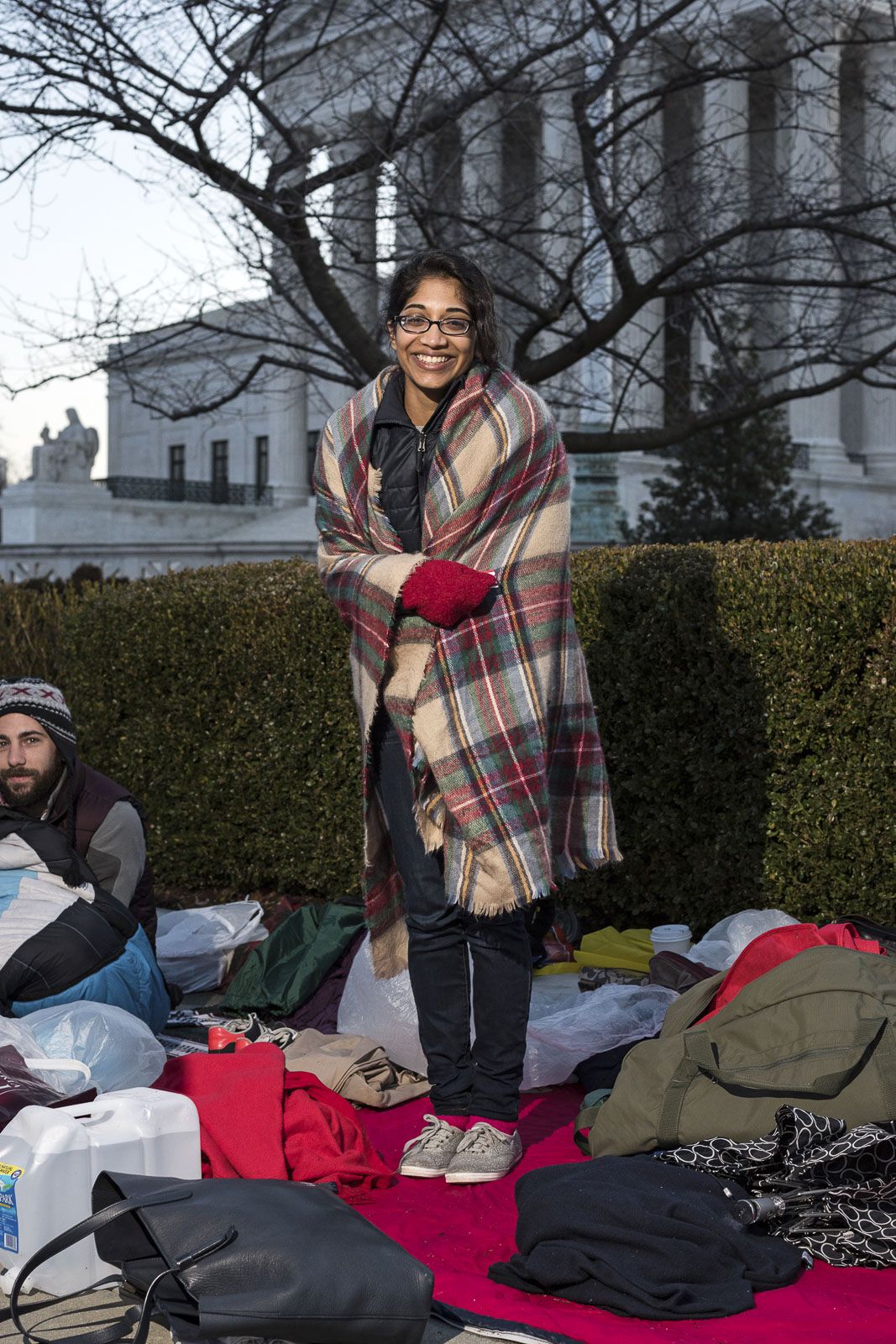Access in Texas: HB2 at the Supreme Court
Guest blog post from Rosann Mariappuram, former RHAP staff and current Texas law student

Rosann Mariappuram, Photo taken by Joshua Yospyn
I arrived in Washington on Tuesday, March 2, the day before the oral arguments for Whole Woman’s Health v. Hellerstedt. I was planning to meet up with the Reproductive Health Access Project (RHAP) staff to make rally signs and then attend the rally on Wednesday morning. As we touched down in D.C. my fellow law students and I got a flurry of excited texts from a friend who was already at the Supreme Court, telling us that there were only two dozen people in line for public tickets so far – and that normally 30-50 people got in. We grabbed our suitcases, hopped on the Metro, jogged up Capital Hill, and got in line by 5pm. We estimated we might be the 30th to 35th people in line.
Spending the night on the sidewalk in front of the Supreme Court was definitely an adventure. Friends stopped by with supplies and food, and RHAP’s amazing board member Emily Kane-Lee gave us a sleeping bag, umbrellas, and hats. Over the course of the night as we hid from the rain we shared stories of why the case was so important to us with other people in line. I got interviewed by a TV station from Houston and the website Refinery29, which was very exciting (and nerve-wracking)! Before I knew it though the sun was coming up and security guards were letting us into the Court.
The ushers seated us in the back, center row of the courtroom. A buzzer sounded and the whole room stood as the eight Justices of the Supreme Court entered. Stephani Toti, the lawyer representing Whole Woman’s Health, stepped forward and began her argument to the Court. She spoke for barely a minute before the Justices jumped in, peppering her with questions. Chief Justice Roberts and Justice Kennedy spent several minutes focused on procedural and administrative questions. But Justice Ginsberg guided the conversation back and secured extra time for Toti to address the damaging outcomes of HB2 on Texas women. After she finished, the U.S. Solicitor General, Donald B. Verrilli, Jr., spoke on behalf of Whole Woman’s Health as well. His office had asked to join the case, which to me emphasized the larger, national impact of TRAP laws like HB2. He was an amazing advocate and effortless switched between answering the Justices’ questions and reiterating the key reasons why ambulatory surgery center requirements and admitting privileges for physicians were TRAP laws.
The Texas Solicitor General, Scott Keller, spoke next in defense of HB2. Once again, the Justices only gave him a few seconds before they jumped in with questions. Justices Sotomayor and Kagan focused on how HB2 was medically unnecessary because of how safe early abortion is. Justice Breyer cut to the real intent of the law, which was to reduce access to abortion. Justice Ginsberg highlighted how unreasonable it was for Texas to say it was critical to enact strict abortion regulations and then also suggesting women in West Texas could go to New Mexico for care when their clinics where forced to close, even though New Mexico has completely different requirements.
Before I knew it time had elapsed and the Court adjourned. I looked at my friends and all of us had the same dazed, thrilled look of knowing we had just witnessed history.
I joined the RHAP staff on the steps of the Supreme Court after that, catching the end of the rally. It was incredible to be in that crowd of over 2,000 people, seeing familiar faces from New York and Texas standing up for reproductive rights. Moving to Texas from New York for law school has been a huge change, and I don’t’ think anything could have prepared me for seeing the effects of HB2 first hand. In January I joined the board of the Lilith Fund for Reproductive Equity, which gives money to people in Texas who need abortions. Lilith is constantly fundraising, but even with all that they can only fund a third of the calls they receive asking for help. I also volunteer with Jane’s Due Process (JDP), a nonprofit that helps teenagers in Texas obtain abortions and navigate the legal hurdles. All of the teens I speak to on the JDP hotline are so strong and it is so difficult having to list out the legal hoops they must jump through to get what should be basic health care.
Seeing first hand how stigmatized and segregated abortion care has become in Texas has made RHAP’s work all the more important to me. Abortion is health care and RHAP’s commitment to integrating reproductive health into primary care is a goal I am committed to working towards, now more than ever.
